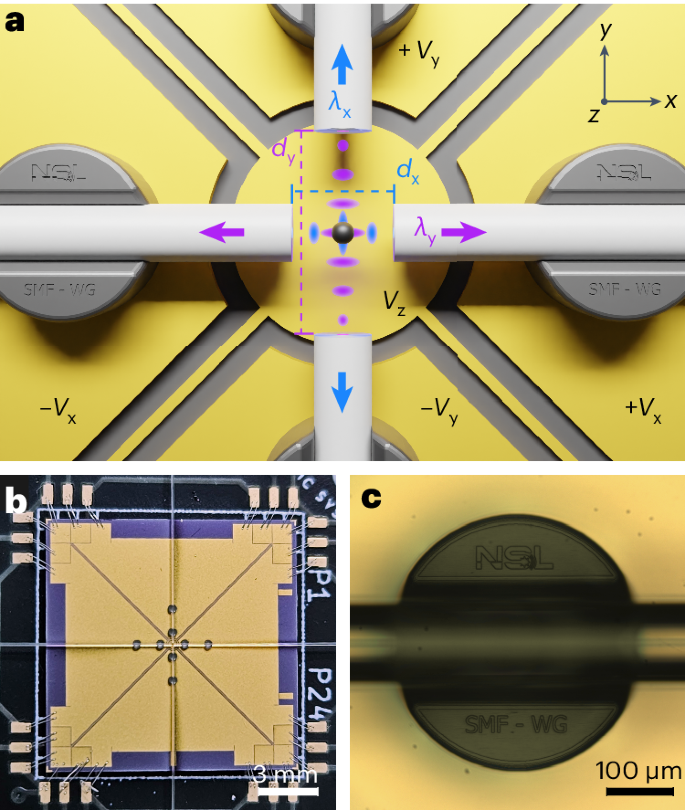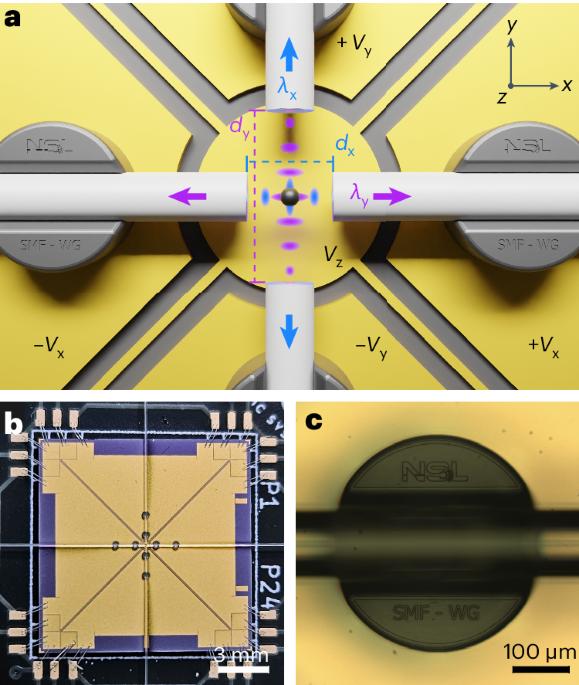Vacuum levitation and motion control on chip
IF 38.1
1区 材料科学
Q1 MATERIALS SCIENCE, MULTIDISCIPLINARY
引用次数: 0
Abstract
By isolating from the environment and precisely controlling mesoscopic objects, levitation in vacuum has evolved into a versatile technique that has already benefited diverse scientific directions, from force sensing and thermodynamics to materials science and chemistry. It also holds great promise for advancing the study of quantum mechanics in the unexplored macroscopic regime. However, most current levitation platforms are complex and bulky. Recent efforts in miniaturization of vacuum levitation set-ups have comprised electrostatic and optical traps, but robustness is still a concern for integration into confined settings, such as cryostats or portable devices. Here we show levitation and motion control in high vacuum of a silica nanoparticle at the surface of a hybrid optical–electrostatic chip. By combining fibre-based optical trapping and sensitive position detection with cold damping through planar electrodes, we cool the particle motion to a few hundred phonons. We envisage that our fully integrated platform is the starting point for on-chip devices combining integrated photonics and nanophotonics with precisely engineered electric potentials, enhancing control over the particle motion towards complex state preparation and read-out. By combining fibre-based trapping and position detection with cold damping through planar electrodes, cooling of a silica nanoparticle particle motion to a few hundred phonons on a chip is achieved.


真空悬浮和芯片运动控制
通过与环境隔离并精确控制介观物体,真空悬浮技术已发展成为一种多用途技术,从力传感和热力学到材料科学和化学等不同科学方向都已从中受益。它还为推动尚未探索的宏观体系中的量子力学研究带来了巨大希望。然而,目前大多数悬浮平台都非常复杂和笨重。最近在真空悬浮装置微型化方面所做的努力包括静电和光学陷阱,但要将其集成到低温恒温器或便携式设备等密闭环境中,其坚固性仍是一个问题。在这里,我们展示了在高真空条件下对位于光学-静电混合芯片表面的二氧化硅纳米粒子的悬浮和运动控制。通过将基于光纤的光学捕获和灵敏位置检测与通过平面电极的冷阻尼相结合,我们将粒子运动冷却到几百个声子。我们设想,我们的全集成平台将成为片上设备的起点,将集成光子学和纳米光子学与精确设计的电势相结合,加强对粒子运动的控制,从而实现复杂状态的制备和读出。
本文章由计算机程序翻译,如有差异,请以英文原文为准。
求助全文
约1分钟内获得全文
求助全文
来源期刊

Nature nanotechnology
工程技术-材料科学:综合
CiteScore
59.70
自引率
0.80%
发文量
196
审稿时长
4-8 weeks
期刊介绍:
Nature Nanotechnology is a prestigious journal that publishes high-quality papers in various areas of nanoscience and nanotechnology. The journal focuses on the design, characterization, and production of structures, devices, and systems that manipulate and control materials at atomic, molecular, and macromolecular scales. It encompasses both bottom-up and top-down approaches, as well as their combinations.
Furthermore, Nature Nanotechnology fosters the exchange of ideas among researchers from diverse disciplines such as chemistry, physics, material science, biomedical research, engineering, and more. It promotes collaboration at the forefront of this multidisciplinary field. The journal covers a wide range of topics, from fundamental research in physics, chemistry, and biology, including computational work and simulations, to the development of innovative devices and technologies for various industrial sectors such as information technology, medicine, manufacturing, high-performance materials, energy, and environmental technologies. It includes coverage of organic, inorganic, and hybrid materials.
 求助内容:
求助内容: 应助结果提醒方式:
应助结果提醒方式:


